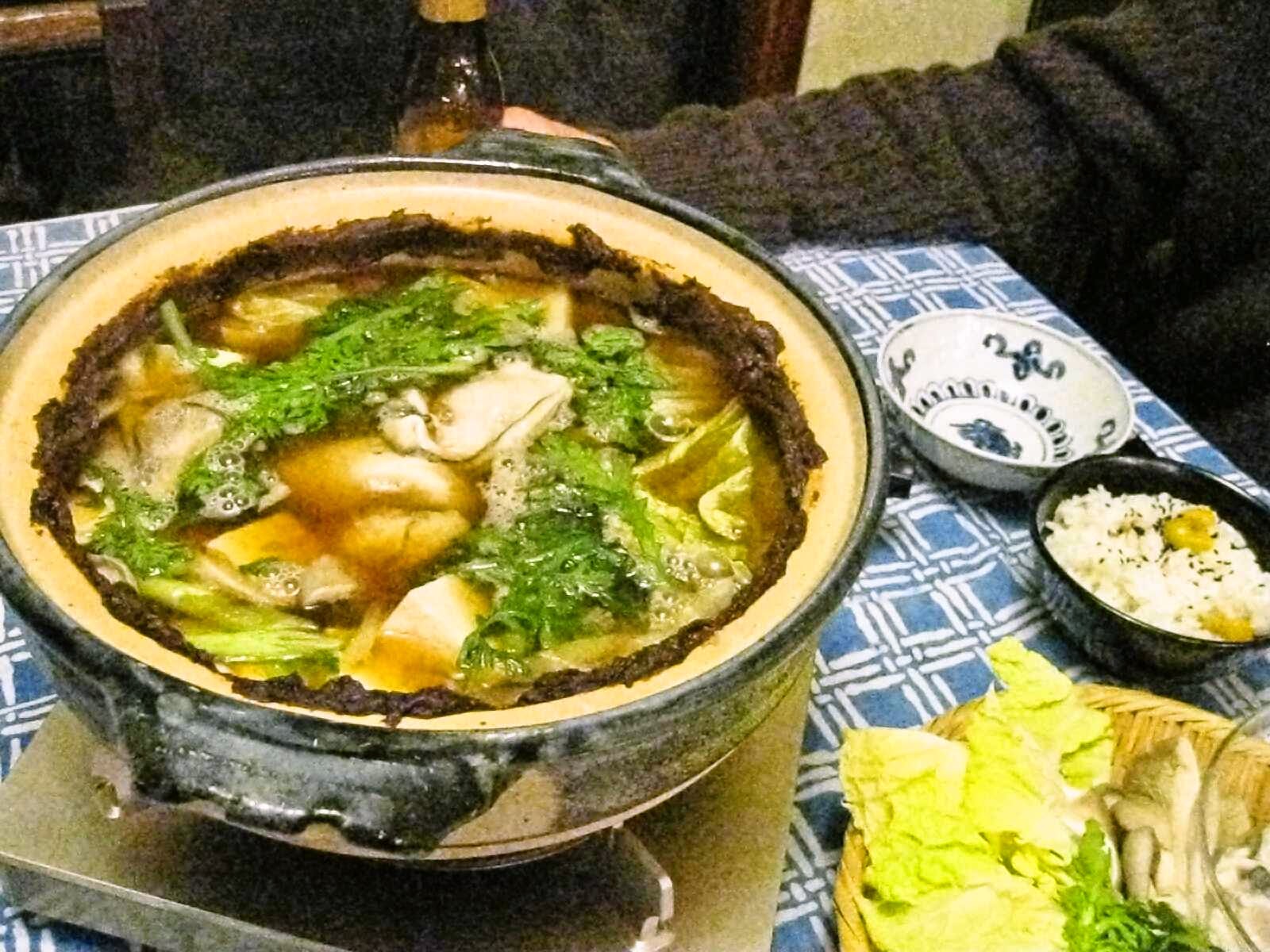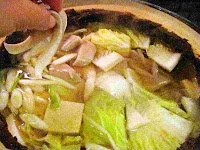<Ingredients>
10-15 cm daikon radish (to clean oysters)
1 yakidofu broiled tofu
Several green onions (white sections)
1/3-1/2 bunch shungiku garland chrysanthemum
5-6 leaves hakusai napa cabbage
Handful mushrooms (oyster mushrooms in photo)
3-4 cm konnyaku yam cake
1 lemon (for serving, not in photo)
1,000 cc dashi
For miso mixture
70 g red miso
30 g white miso
1 tbsp sake
1 tbsp mirin
<Directions>
1.
Clean oysters.
Grate daikon radish, gently rub oysters with daikon, rinse, and set aside.
If daikon radish is not available, clean oysters with potato starch.
2.
Remove shungiku leaves from stems.
Cut hakusai into 4-5 cm squares (cut lengthwise into 2 or 3, then cut crosswise into square pieces).
Diagonally slice green onions.
Cut yakidofu into 8 pieces.
Cut or tear mushrooms into smaller pieces.
Slice konnyaku 7-8 mm thick, and form tazuna “reins” (this is optional; you form a rein by cutting the center and putting one end through the cut).
Quickly boil konnyaku, and drain.
3.
Mix all ingredients for miso mixture, and put along inside upper edge of pot.
4.
Pour dashi until it almost reaches miso mixture.
If dashi is not enough, add water.
Bring dashi to boil.
5.
Add ingredients that take longer to cook than others.
Here, yakidofu and hakusai (white sections in particular) are added first.
Gradually add other ingredients except for shungiku and oysters.
6.
When hakusai is cooked (turns translucent), take pot to the table and continue cooking on a portable stove.
Add shungiku.
Add oysters. Cook only the number to be eaten at one time, as oysters should be cooked only briefly, a maximum of several minutes.
Serve goodies with some miso from the pot.
Squeeze lemon before eating.
<Notes>
- See “Cleaning shelled oysters” for trivia behind using daikon radish to clean oysters.
- Cooking ingredients as you eat is ideal for hot-pot dishes. Overdone food is never good. Other than root vegetables (they take longer to cook), put in only enough ingredients at a time to prevent them from being overcooked.
- Other suggested ingredients for this dish include other types of tofu, gobo burdock root, carrots, daikon radish, komatsuna, mizuna, mibuna, daikon/kabu leaves, chingensai baby bok choy and other green leafy vegetables, negi green onions, and shirataki konnyaku yam noodles.
- Use your favorite miso. Other than making the miso mixture somewhat sweet, there is no strict rule about what miso to use or the proportion when combining several types.
- The name dote-nabe is said to come from placing the miso mixture in a dote [mound] form along the inside upper edge of the pot. There is also a story that the dish was created by an oyster merchant named Dote.
- To finish up the broth, make zosui porridge. The following morning, we added a small amount of soy sauce, steamed rice, beaten eggs and mitsuba to the broth of this dish to make zosui porridge.















No comments:
Post a Comment